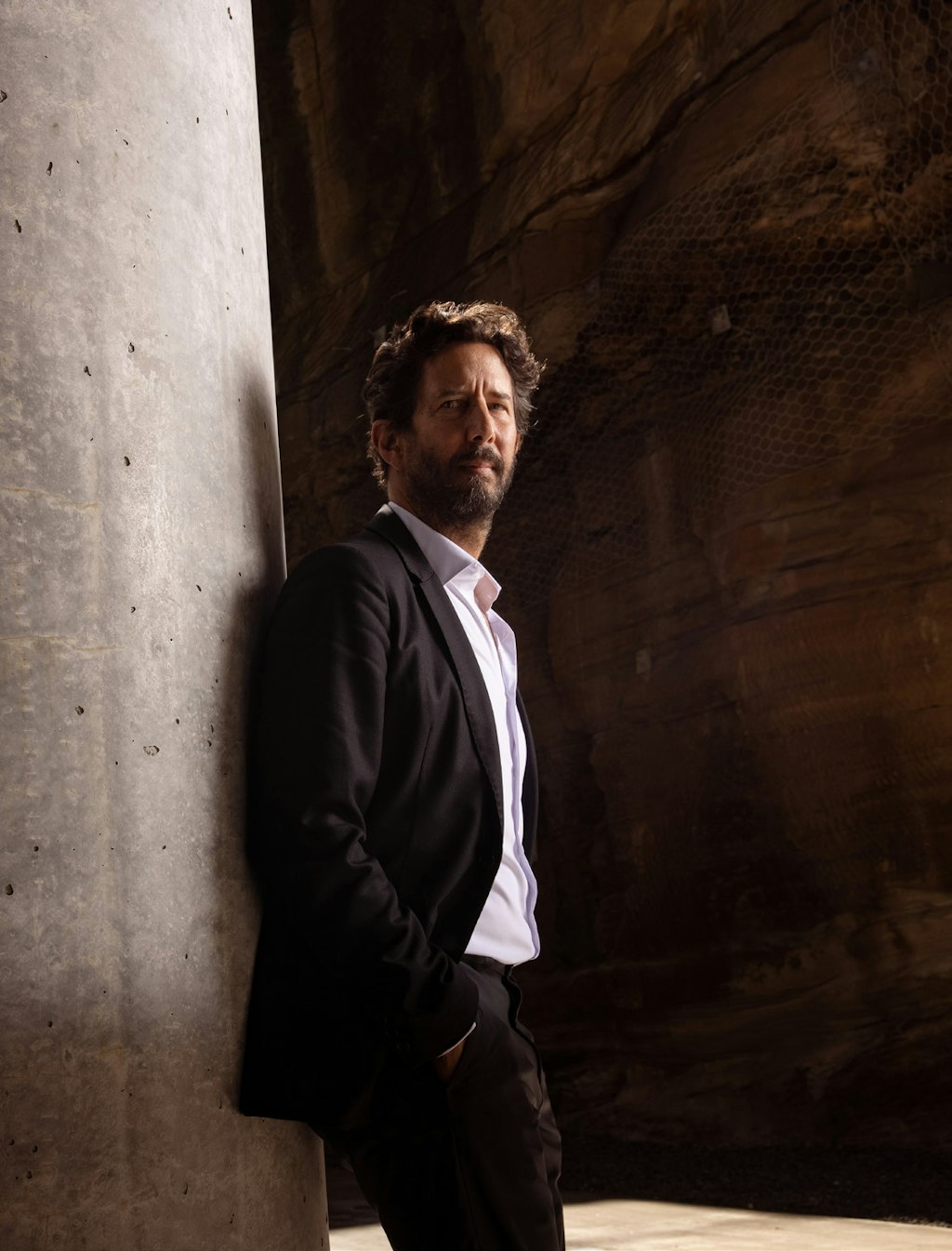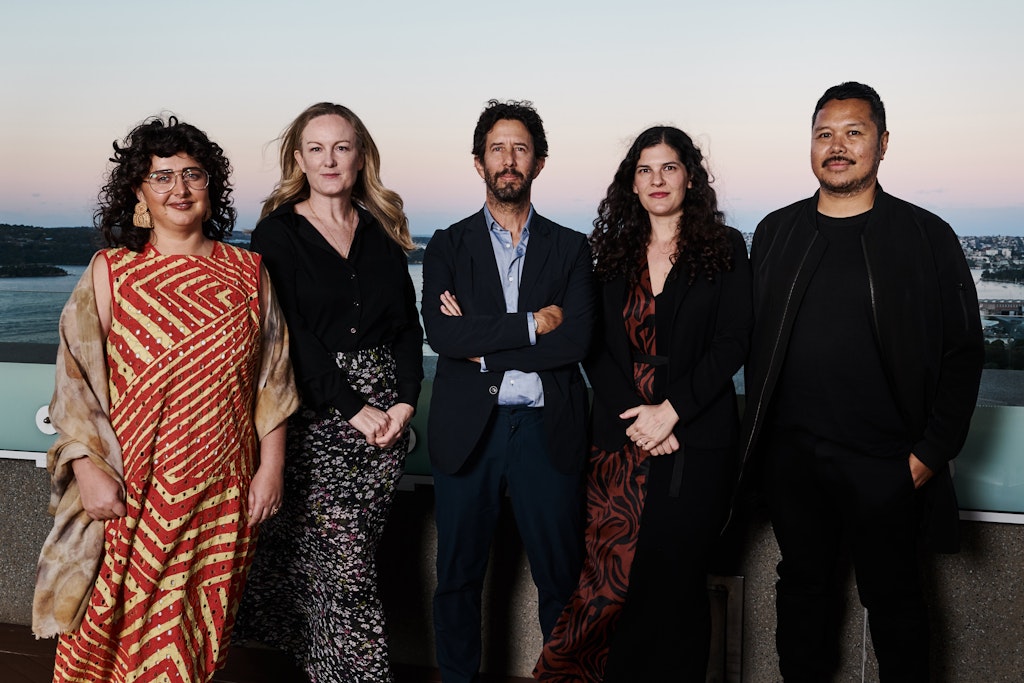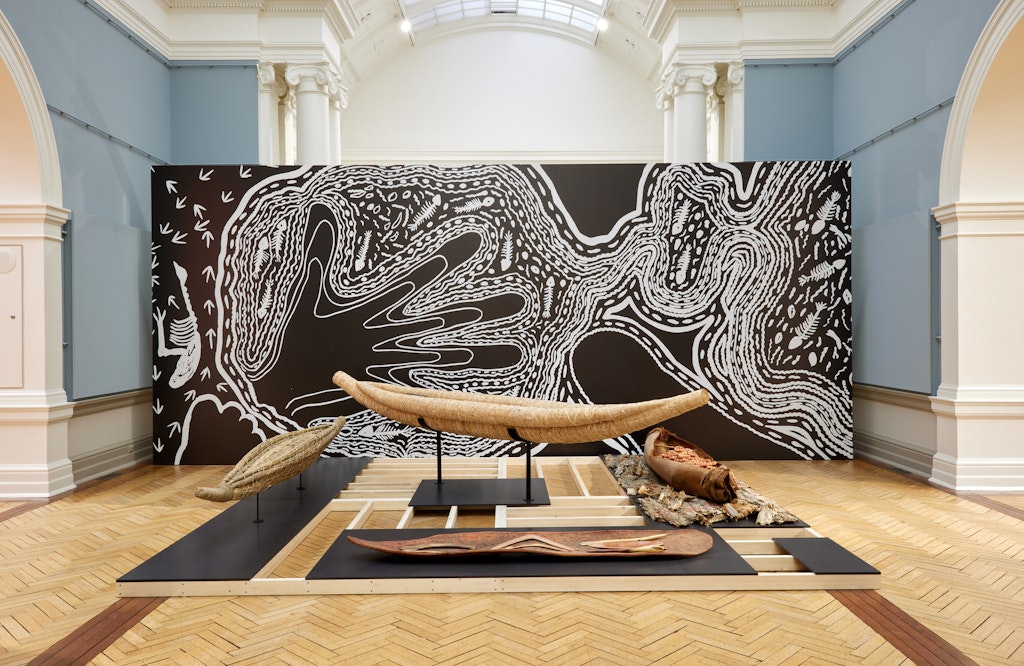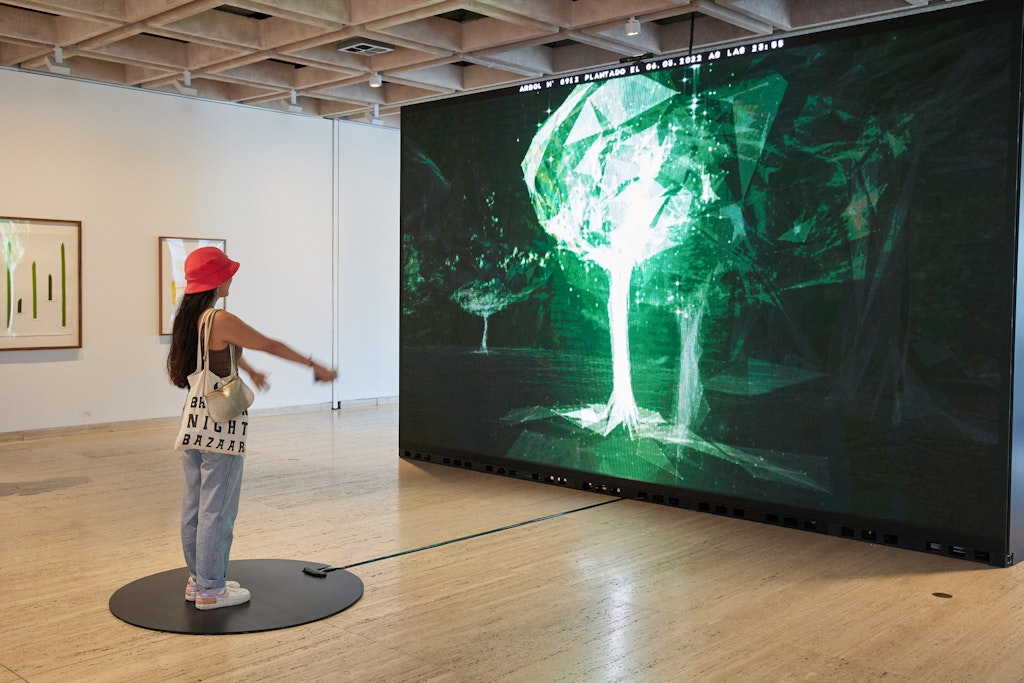Go with the flow

José Roca, artistic director of the 23rd Biennale of Sydney. Photo: Daniel Boud
José Roca, artistic director of the 23rd Biennale of Sydney. Photo: Daniel Boud
It seems appropriate to be interviewing José Roca, the Colombian artistic director of the 23rd Biennale of Sydney, beside Blackwattle Bay in Glebe. An inlet of the Parramatta River, where rowers and kayakers glide on water once fouled by heavy industry, Blackwattle is a neat fit with Roca’s Biennale, opening in March 2022 at venues including the Art Gallery of New South Wales.
Roca has titled the Biennale rīvus, meaning stream in Latin. The affable, nature-loving curator insists it will be more than just ‘the river Biennale’. But the undeniable essence of the three-month event lies in the headwaters, bodies and deltas of the world’s watercourses – in their stories of environmental degradation, and in the stories of all humans who rely on rivers for their very lives.
Rivers are even listed as Biennale ‘participants’ – a term Roca insists on instead of ‘artists’. Rivers will be represented by ancestral/Indigenous or contemporary custodians who will speak on their behalf. The Martuwarra/Fitzroy River in Western Australia will be one such river, along with the Vilcabamba River of Ecuador whose custodians successfully sued the local council over pollution.
‘If rivers can have a legal voice, why wouldn’t they have a voice that can engage in a conversation with other participants in the Biennale? That is the basis for us inviting those rivers as participants,’ Roca says. It certainly makes you think. But there’s more. Each rīvus venue, including the Art Gallery, will be known as a ‘wetland’. Each wetland will have a core theme that meanders into tangential ideas and concepts populated by artworks, public programs, experiments, research and ‘activisms’. A different river will ‘host’ the Biennale at each venue, and the whole event will hinge on Indigenous knowledge that has long understood non-human entities as living ancestral beings with a right to life that must be protected.
Other participants in the Biennale will include artists, scientists, musicians and poets who have studied rivers, fought to protect them, or been inspired by their fragile beauty. All were selected by the curatorium of colleagues that Roca established after his appointment in September 2020.
Drawn from the Biennale’s principal host venues, the curatorium members are Paschal Daantos Berry, head of learning and participation at the Art Gallery of New South Wales; Anna Davis, curator, Museum of Contemporary Art Australia; Hannah Donnelly, producer of First Nations programs at the Information + Cultural Exchange in Parramatta, and Talia Linz, curator at Artspace. (Artspace will be closed for building works during the Biennale but would otherwise be a venue.)

The curatorium, from left: Hannah Donnelly, producer, First Nations programs, Information + Cultural Exchange (I.C.E.); Anna Davis, curator, Museum of Contemporary Art Australia; José Roca, artistic director, 23rd Biennale of Sydney; Talia Linz, curator, Artspace; and Paschal Daantos Berry, head of learning and participation, Art Gallery of New South Wales. Photo: Joshua Morris
For Roca, the curatorium is a grouping of equals including himself. ‘The project reflects more of our collective thinking than it does my original proposal,’ he says.
Daantos Berry agrees, saying Roca’s style is generous and inclusive, building on the model created by curator Brook Andrew for his NIRIN Biennale in 2020. Roca quickly got the curatorium thinking differently about rivers – for example, the contemporary reality of watercourses having ‘riverhood’, with rights to appear before courts and to petition governments. The Atrato River, which was granted legal personhood rights by the Constitutional Court in Colombia in 2017, is just one example.
Because the curatorium’s Australian members are closely connected to community arts bodies, it is unsurprising that the Biennale will include some hyperlocal projects. One of these will explore a migrant community that successfully negotiated permission to practise baptisms in the Georges River in south-west Sydney, Daantos Berry says.
Among Biennale participants recommended by Daantos Berry was Uncle Badger Bates, whose linocuts to be seen at the Art Gallery were inspired by environmental problems besetting the 1472 km Darling River in NSW. Under the Art Gallery’s auspices, Bates has also been working with the children of Wilcannia to build canoes that will also be on display. ‘The first canoe that Uncle Badger cut in November last year was the first canoe cut from those trees in 70 years,’ Daantos Berry says. ‘Reconnecting to cultural practices and what that does to reinvigorate communities is important for us to celebrate in this Biennale.’

Installation view of works by Badger Bates, Senior Craftsman Rex Greeno and son Dean Greeno, and John Kelly and Rena Shein, rīvus, 23rd Biennale of Sydney, Art Gallery of New South Wales © the artists
International participants to be showcased include the collective Ackroyd & Harvey (US artists Heather Ackroyd and Dan Harvey), who will present photographs printed on living grass.
Curatorium member Talia Linz selected the American artist Kiki Smith, whose work focuses on the human body and its alignment with nature.
‘José had worked with her before,’ Linz says. ‘She has not had any kind of big presentation here. We are hoping it will be some large-scale tapestry and a new sculptural piece.’
Sheroanawe Hakihiiwe, an Indigenous Yanomami artist from the Venezuelan Amazon, will present his drawings from nature.
Rosa Jijon and Francesco Martone, a collective known as A4C Arts for the Commons, launched their Voices of Rivers website on World Rivers Day in 2021. The artists mapped rivers already granted personhood status, recorded their sounds and invited Ecuadorian composer Daniel Mancero Baquerizo to make the sounds into an ‘acoustic reality’. In other words, Baquerizo turned the rivers’ poundings and gurglings into music. The music will be uploaded for use by campaigners struggling on behalf of rivers.
In a recent Biennale webinar, Jijon and Martone urged people to sign the Universal Declaration of the Rights of Rivers, which lists rights including the right to flow and to be free of pollution, the right to restoration, the right to have legal guardians, and the right to recognition that they are living entities with legal standing.
Elsewhere in the Biennale, Colombian Amazon jungle elder Abel Rodriguez will exhibit his detailed drawings of the river. Two Brazilian artists are participating, one with a series of paintings and the other with photographic collages dealing with the aquifer underneath the Amazon jungle.
Roca shared in the outpouring of grief when Naziha Mestaoui, a young Belgian artist of Moroccan origin, died in 2020. Roca had worked with Mestaoui before, and had secured her interest in being a participant in rīvus. In Mestaoui’s honour, the Art Gallery will present an interactive work titled One beat, one tree. The work employs a tracking camera that enables visitors to cause a seed to fall from a virtual forest and begin to grow. For each virtual tree planted by visitors, the Art Gallery will plant a real one at a location to be determined, Roca says.

Installation view of Naziha Mestaoui One beat, one tree, courtesy and © the artist's estate
For Roca, respect for rivers began in early childhood when he lived and played beside the Magdalena River where it spills into the Caribbean at Barranquilla. Even though the family moved inland to Bogota when he was five, they continued to holiday in Barranquilla and the Magdalena remains close to Roca’s heart because of his deep connection with it and because of its strife-torn history.
‘Rivers have been givers of life, but they were natural avenues for the colonial enterprise,’ he says. ‘The history of Colombia is in the Magdalena. It’s become a sewer. It also became a mass grave because the casualties of war were just thrown into the river.’ Initially trained as an architect, Roca has been a leading curator for many years. He co-curated the 27th Bienal de Sao Paulo, Brazil, in 2006. He was artistic director of Philagrafika 2010, Philadelphia’s international triennial celebrating print in contemporary art. He served on the awards jury for the 52nd Venice Biennale in 2007. He was chief curator of the 8th Bienal do Mercosul in Porto Alegre, Brazil, in 2011. In 2012 Roca and his wife Adriana Hurtado established the not-for-profit contemporary art space FLORA ars+natura in Bogota. He was curator of Latin American art at the Tate, London, from 2012 to 2015.
Believing himself to be out of ideas, Roca decided ten years ago that his days of directing biennales were over. But he changed his mind for Sydney. ‘The situation on the planet has gotten almost past the tipping point. It didn’t feel that way somehow in 2011,’ he says.
‘I feel that I still have some things to say after all, and this biennale – given its tradition, its relation to the land and to the original dwellers of these lands – is a good laboratory to test out many of these ideas I’ve been having over the last decade since my last biennale.’
A version of this article first appeared in Look – the Gallery’s members magazine